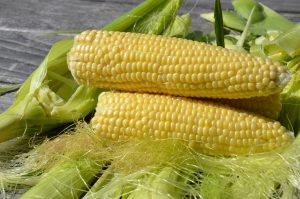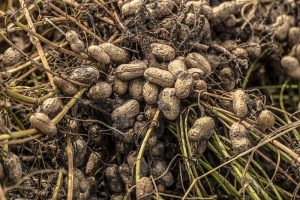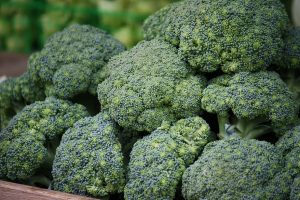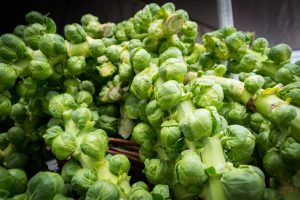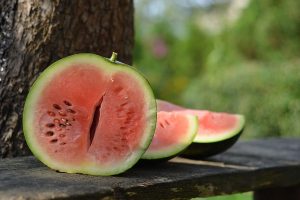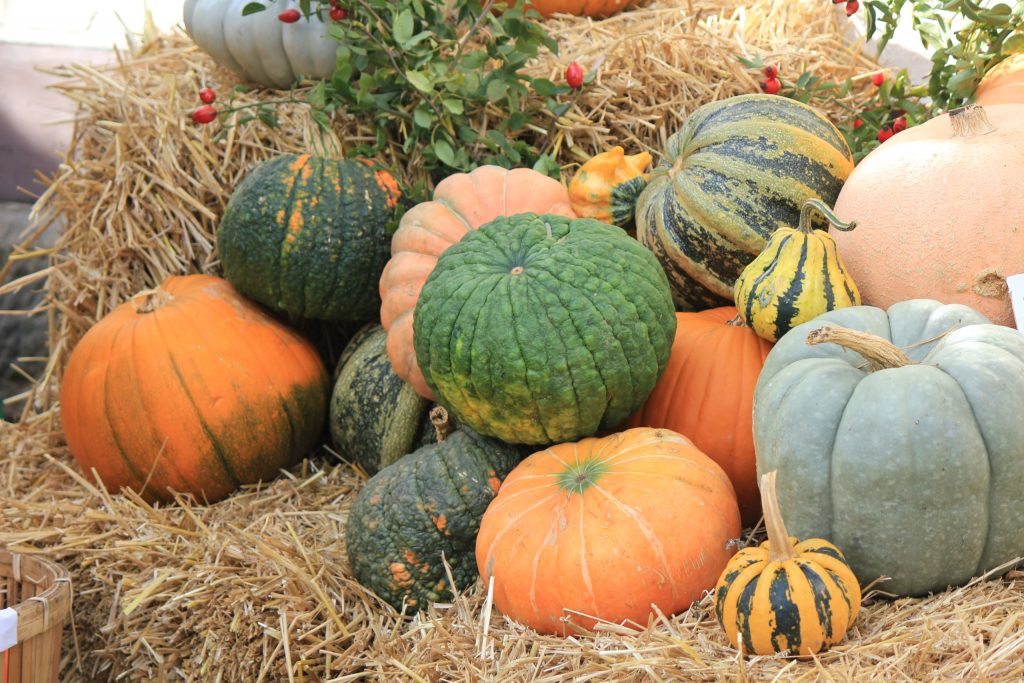
Pumpkins are a popular crop not only during the fall season but also for Halloween parties and Thanksgiving celebrations. If you’re a gardening enthusiast or simply want to try growing your own pumpkins, then this blog is perfect for you! In this post, we’ll be discussing some tips and tricks on how to grow pumpkins successfully in your garden. From choosing the right soil to how to give your pumpkin plants enough nutrients, you’ll learn everything you need to know about pumpkin growing. So, without further ado, lets dive into the world of pumpkin cultivation!
Choose a Sunny and Sheltered Spot
To successfully grow pumpkins, choosing the right spot is crucial. As mentioned earlier, pumpkins require a position in full sun that’s sheltered from the wind. It’s recommended to choose a spot that receives at least six hours of direct sun per day. Additionally, a sunny and sheltered spot from the wind is preferred. To ensure the pumpkins get enough water, sink a 15cm pot alongside the plants and water into it. It’s also advised to dig in lots of garden compost or well-rotted manure into the soil before planting. By following these guidelines, pumpkins are more likely to thrive and produce a bountiful harvest, making it all worth the effort.
Planting in Rows or Groups
Once the ideal location has been found and prepared, it’s time to start planting. Pumpkins can be planted in rows or groups, depending on available space and personal preference. If planting in rows, space the seeds 6 to 12 inches apart in rows that are at least 8 feet apart from each other. If planting in groups, sow four to five seeds in a spot with full sun, spaced out at least 4 to 8 feet apart. Once the seedlings are 2 to 3 inches tall, thin them to one plant every 6 feet. By planting in rows or groups, it not only helps with organization but ensures enough space for the vines to grow and produce healthy pumpkins.
Starting with Seeds or Seedlings
Starting with seeds or seedlings is a crucial step in growing pumpkins. As discussed in the previous sections, it is important to choose a sunny and sheltered spot, plant with proper spacing and depth, and create a pumpkin hill. There are two options when starting to grow pumpkins starting with seeds indoors or sowing them directly outside. If the climate is cool or temperate, it is recommended to start seeds indoors 3-4 weeks before planting. This offers more reliable results and better seedlings for a healthy pumpkin crop. On the other hand, in warm locations, the seeds can be sown directly outside in late May or early June for best results. It is recommended to plant three seeds in each spot and thin to the strongest plant later. Once the young plants are well-established, thin them down to the best two or three plants in each hill. These tips will help you grow healthy pumpkins that will yield a bountiful harvest.
Planting Depth and Spacing
In order to ensure successful pumpkin growing, planting depth and spacing are crucial factors to consider. Depending on the variety of pumpkin being grown, the recommended planting depth varies from 1 inch to 2.5cm deep. It’s important to sow the seeds on their side to reduce the risk of rotting. Once the seedlings begin to grow, thin them out to one plant every 18 to 36 inches for optimal growth. When planting in rows or hills, make sure to space them accordingly. Bush plants require 4-5 feet between-row spacing, short-vine habits require 6 feet, and long-vine habits require 12 feet. Hills should be spaced 4 to 8 feet apart and individual sowing/planting sites should be spaced at least 90cm (3ft) apart for bush plants and 1.5m (5ft) for trailing plants. Creating a pumpkin hill can also help with spacing and drainage. By following these guidelines, pumpkin growers can ensure that their plants have enough space and nutrients to grow to their fullest potential.
Creating a Pumpkin Hill
Once you’ve chosen the perfect spot for your pumpkin patch and decided on the best way to plant them (in rows or groups), it’s time to create what’s known as a pumpkin hill. This is simply a small mound of soil that helps improve drainage and allows the sun to heat the soil more effectively. To create the perfect pumpkin hill, start by building a small mound of dirt about 4-5 inches tall. Then, plant three to four seeds 1-2 inches deep in the center of the hill, spacing each seed about 6-8 inches apart. Cover the seeds with soil, and water gently. Over time, the seeds will germinate and sprout into pumpkin vines that will grow out and over the hill. Remember to keep the soil moist and fertilize regularly to ensure a successful harvest.
Ideal Soil Conditions for Pumpkins
To have a successful pumpkin growing season, it’s important to ensure that the soil conditions are ideal. Pumpkins prefer rich, loamy, and well-draining soil with a pH between 6.0 to 6.8. To improve the native soil, gardeners should mix in several inches of organic material such as compost or manure before planting. It is recommended to plant pumpkins on a hill that is six inches or more above the garden level, as this will help the soil to warm up faster and drain well. These plants need plenty of food and water, so a sunny spot with fertile soil will be best. Once the plant starts to grow, it’s essential to maintain a consistent watering schedule as pumpkins are sensitive to both drought and water-logging. Keeping these tips in mind will help gardeners to cultivate healthy and vibrant pumpkins come harvest time.
Germination and Growth Rate
Once you’ve planted your pumpkin seeds in a sunny and sheltered spot with well-drained soil, it’s important to keep them moist until they germinate. The optimal soil temperature for germination is between 25 and 35C (68-95F), and seeds should sprout within 7-14 days. Once the sprouts emerge, it’s important to thin them out to avoid overcrowding. As the seedlings grow, true leaves will appear, and it’s important to keep them watered and fertilized. The vines will start to develop, and flowers will appear for pollination. After successful pollination, the fruit will begin to grow, and it’s important to keep them on a regular watering schedule. With proper care, you can expect a growth rate of around 1-2 inches per day. By following these simple steps, you’ll be able to grow healthy pumpkins and reap the benefits of a bountiful harvest.
Annual Plant Life Cycle
In order to successfully grow pumpkins, it helps to have an understanding of their annual plant life cycle. Pumpkins are classified as annual plants, meaning they complete their entire life cycle in one growing season. This includes distinct growth stages such as germination, vegetative growth, flowering, fruit development, and finally, harvest. It’s important to choose a sunny and sheltered spot for planting, and to make sure the soil is warm and frost-free before planting seeds or seedlings. Proper spacing, planting depth, and soil conditions are also vital factors in pumpkin growth. With a little patience and care, pumpkins can be harvested in 90 to 120 frost-free days and their seeds can be saved for future planting. Following these tips for a successful pumpkin growing season will ensure a bountiful harvest of these festive and tasty fall favorites.
Harvesting and Saving Seeds
After successfully growing pumpkins, the next step is to harvest and save the seeds for the next planting season. Harvesting should be done when the pumpkin is fully ripe, and the stem has dried up. It is necessary to rinse off all pulp, and remove as much pulp as possible from each seed. Inspect the clean seeds carefully, and select the largest ones to save, as they usually have a better germination rate. Plan on saving three times more pumpkin seeds than the number of plants to be grown. Additionally, it’s essential to properly store the pumpkin seeds in a cool, dry place until the next planting season. By using quality seeds and following these seed-saving practices, gardeners can continue to grow fresh pumpkins every year.
Tips for Successful Pumpkin Growing.
After choosing a sunny and sheltered spot, planting in rows or groups, starting with seeds or seedlings, planting at the right depth and spacing, and creating a pumpkin hill with the ideal soil conditions, it’s time to focus on growing those pumpkins successfully. Here are some tips to help you do just that:
1. Water regularly – Pumpkins love water, especially during the fruiting stage. Ensure they receive regular deep watering, but avoid getting the foliage too wet, which can result in fungal diseases.
2. Fertilize properly – Use compost or manure to enrich the soil, and add a balanced fertilizer during the growing period to support healthy plant growth.
3. Control pests – Pests like squash bugs and cucumber beetles can damage your pumpkin plants. Monitor your plants regularly, and use organic pest control methods like handpicking and companion planting.
4. Provide support – As the fruit grows, it can become too heavy for the vines to support. Use a trellis or stake to provide additional support, and prevent the fruit from rotting on the ground.
5. Harvest at the right time – Wait until the pumpkin’s skin is hard and the stem has started to dry before harvesting. This will ensure the fruit is fully matured and ready to be stored or cooked.
Following these tips can help ensure a bountiful pumpkin harvest, so get planting and growing today!


